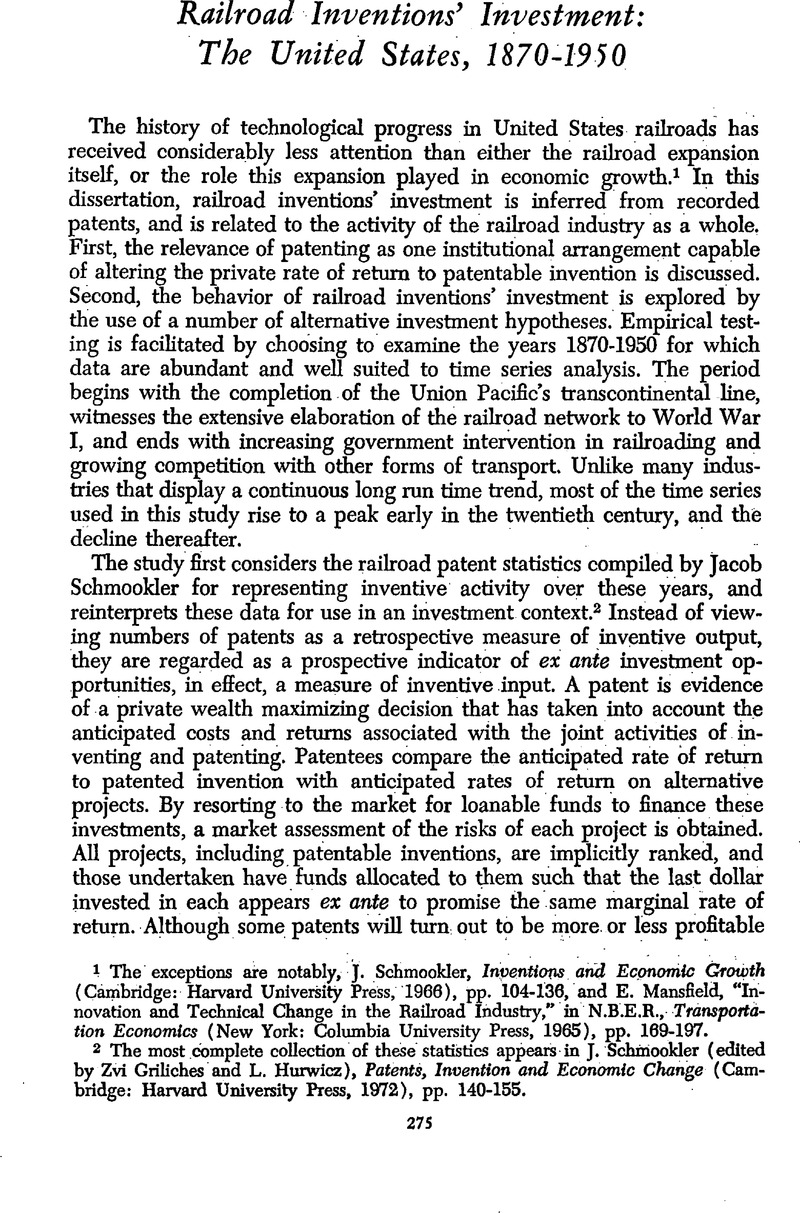No CrossRef data available.
Article contents
Railroad Inventions' Investment: The United States, 1870–1950
Published online by Cambridge University Press: 11 May 2010
Abstract

- Type
- Summaries of Doctoral Dissertations
- Information
- Copyright
- Copyright © The Economic History Association 1974
References
page 275 note 1 The exceptions are notably, Schmookler, J., Inventions and Economic Growth (Cambridge: Harvard University Press, 1966), pp. 104–136CrossRefGoogle Scholar, and Mansfield, E., “Innovation and Technical Change in the Railroad Industry,” in N.B.E.R., Transportation Economics (New York: Columbia University Press, 1965), pp. 169–197.Google Scholar
page 275 note 2 The most complete collection of these statistics appears in Schmookler, J. (edited by Griliches, Zvi and Hurwicz, L.), Patents, Invention and Economic Change (Cambridge: Harvard University Press, 1972), pp. 140–155.CrossRefGoogle Scholar
page 276 note 3 See Schmookler, Invention and Economic Growth, Chapter 2, pp. 18–56.
page 276 note 4 See Prout, H. G., A Life of George Westinghouse (London: Benn Brothers, 1922), pp. 21–28.Google Scholar
page 277 note 5 Golden, J. R., for example, in his “Investment Behavior by United States Railroads: 1870–1914,” Journal of Economic History, XXXII (1972), 412–414CrossRefGoogle Scholar, reports on regional differences in this composition and assigns increasing importance to current demand factors, particularly where rolling stock has largely replaced track investment; and after the turn of the century when the railroads undertook significant financial reorganization. In a different way, Neal, L. in his “Investment Behavior by American Railroads: 1897–1914,” Review of Economics and Statistics, LI (1969), 126–135CrossRefGoogle Scholar, lends added support to these same-findings by demonstrating the superiority of short run financial considerations in explaining. railroad investment after 1897 when equipment probably tended to dominate aggregate railroad capital expenditures notwithstanding regional variations.


